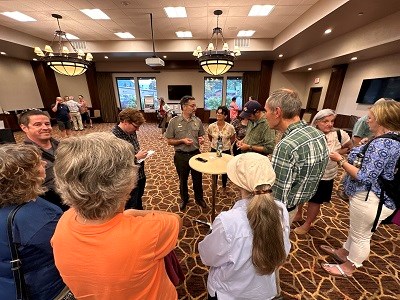
OverviewThe National Park Service mission calls for us to provide the best possible access to meaningful and enjoyable experiences while preserving the resources that make Glacier special. In recent years, achieving that mission has gotten more complex due to growth in visitation and changing use patterns. While this increase means that more people are exploring and connecting with the park, it also presents diverse challenges like crowding and congestion and difficulty providing timely emergency responses. It also has impacts on the park’s resources such as iconic wildlife, tribal connections, the scenic glaciated landscape, the park's historic infrastructure such as Going-to-the-Sun Road, and facilities such as water and waste disposal systems. We’ve used a variety of tools to address these challenges over the years. Most recently, we’ve piloted a series of different reservation systems during the last three summers. We’ve learned a lot from these pilots—now we are using input from public feedback taken during the August 16 to September 30 open comment period to determine how the park will operate in the summer season of 2024. 
Key IssuesPark managers have identified the following six issues related to increasing visitor use at the park:
You can read more details about each of the key issues on the project's storymap. 
Public OutreachEngaging with the public is an important part of this process and is essential when exploring management strategies. During the open comment period for 2024 Visitor Use Management Strategies, a total of 1,408 correspondences were received between August 16 to September 30, 2023.The NPS is considering all comments from members of the public, including comments received directly by the park through US mail, email, inupt recieved during public meetings, and those entered in the NPS’s Planning, Environment, and Public Comment (PEPC) website. Input from these comments will help to inform our strategies for how visitors will access park areas in the summer of 2024. You can expect to hear more about how to visit the park next summer after we have reviewed and considered input later this fall. Below you can find a link to the summarized report from the open comment period and a sortable spreadsheet which contains public comments with personaly identifiable information removed.

Public Meetings and Open HousesGlacier National Park hosted two in-person open houses in August 2023 to allow visitors to speak with park staff in an interactive setting, learn more about the process, and provide informal feedback. 2024 Visitor Use Management Strategy CorrespondencesA total of 1,408 correspondences were received during the Aug 16 through September 30, 2023 public engagement period including 35 emails, 32 hand written forms, 1 letter, and 1,376 webform submissions that were made directly to the PEPC site. The comments released in this dataset include all comments that were made directly to the PEPC website submission form. A summarized report of the correspondences including domographics and key themes can be found here: 2024 Visitor Use Management Strategy Comment Summary Report Topic Question 1: What experiences in Glacier National Park are most important to you? Topic Question 2: What does your ideal experience at Glacier National Park look or feel like? Topic Question 3: What most detracts from the quality of your experience in the park, if anything? Topic Question 4: What did you learn from the three years of managed access pilots at Glacier? What worked well for you? What could have been better? Topic Question 5: The National Park Service mission calls us to ensure fair and equitable visitor access while providing high-quality experiences and protecting the park and its resources. What strategies should the National Park Service consider to achieve these goals? Topic Question 6: Do you have any other thoughts you would like to share? Is there anything you feel we have not covered?
Frequently Asked QuestionsWhy was this public engagement process needed? The park has seen increasing visitor use for years. These impacts include traffic congestion, visitor movement challenges, and road and valley closures as a result of traffic congestion. Increased visitation has impacts on park staffing, park operations such as water systems and emergency response, infrastructure capacity, and visitor use impacts on aging facilities. High visitation also has impacts on natural and cultural resources and the quality of visitor experience at key destinations. The National Park Service believes that managed access and related strategies may be needed in high-demand areas where other strategies have not been sufficient to ensure high-quality experiences, visitor safety, and resource protection. Managed access is a suite of tools that help pace the timing and volume of visitation into areas to optimize access, ensure quality experiences, and protect resources. Examples of managed access on a park entry scale include the vehicle reservation systems and ticketed entry the park has piloted in recent years. Some examples of managed access strategies have been in place for a long time, including wilderness permits, campground reservations, and even lodging reservations. Managed access and related strategies are not a standalone solution. This public engagement process will carefully evaluate many different tools and techniques that would be most effective to help Glacier improve how visitors get to and experience the park’s significant resources and features. No. The park was seeking public input to inform visitor access in 2024. In response to the trend of increased park visitation, stress on infrastructure, and road congestion, the NPS developed the Going-to-the-Sun Road Corridor Management Plan, which was completed in 2019. The plan considered managing vehicles in the Going-to-the-Sun Road Corridor and included strategies to better manage visitation, such as:
The Going-to-the-Sun Road Corridor Management Plan is still being implemented and it notes a reservation system for the corridor may be needed in the future. Park managers are interested to learn if any of the strategies included in the plan are still of interest to the public for summer 2024. 2024 Visitor Use Management Strategy StoryMap |
Last updated: November 9, 2023
